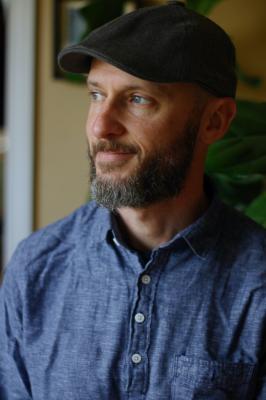An Interview with Writer Glenn Taylor
On setting a scene, folklore, and Ole Doctor Go
Ahead of his upcoming visit to Penn State Behrend as part of the Smith Creative Writing Reading Series, I conversed with novelist Glenn Taylor via email to discuss his writing. Taylor will be reading from his new novel The Songs of Betty Baach on Thursday, Apr. 20 at 6 p.m. in the Metzgar Center. The event is free and open to the public.
Alanna Gillis (AG): Could you describe your relationship with writing? Has it changed over time, and if so, how?
Glenn Taylor (GT): As a kid, I was into drawing. I would just draw all the time. I did some writing too, and after a while, the drawing dropped away. Then I was lazy about writing for a long time. When I developed a writing routine, I wrote Trenchmouth. That was after graduate school, and we were having babies and I was teaching at Harper College in suburban Chicago. Since then, my routine has come and gone and morphed into something like ritual, where I try to tune my ear to the voice I want to hear and then let it rip.
AG: Place and setting, specifically West Virginia, are important to your novels. How do you choose where to set your work?
GT: Always my hometown Huntington has seemed like a no-brainer because I know it the best and longest. Also, my dad's hometown of Matewan, West Virginia is obviously the stuff of legends.
AG: How do you write settings? What are the keys to description of a place? What tips would you have for burgeoning writers in establishing a setting?
GT: I use my memory of strange little things – like a phrase someone said, or maybe the way a coal train on the ridge drowned out somebody who was talking too long, or maybe just the way crows perch on a dumpster lid.
AG: It is evident that you do a lot of research to inform your work. How do you approach research as a novelist?
GT: I go the "found research" route. In other words, I follow my obsessions and go deep on a few things. However, I don't let that dictate my creative mind. One must, simultaneously to "found research," mix in a heavy element of wild style and bold chance taking.
AG: Your writing includes elements of folklore and folktales. How do you decide which folktales will inform your work?
GT: I fall into a copy of Kickle Snifters and Other Fearsome Creatures, which is itself a wacky miasma of folktale, folklore, indigenous tales, and shared stories of animals across time and the world, and I just let the voice carry all that in the way which seems fitting, or perhaps easiest and most fun to listen to.
AG: In your new novel The Songs of Betty Baach, you write from the perspective of a Black woman who claims to have been alive for more than three centuries. In the endnotes of the book, you, a white male, deliver a powerful statement about trying to write respectfully from a perspective that is not your own. How did you approach this task, and what advice do you have for writers who are trying to do the same?
GT: Well, as Betty points out early, though she does not know who her father is, she "came up white" and saw that they'll kill you if you weren't white. And she is 321, so she has enjoyed the privilege of being white. But the question still applies at its root, and I appreciate what you said about the acknowledgements. I only wrote from this perspective after much talking and listening with my sisters and my wife, and my cousin Ann, and then it didn't seem possible any other way once I had Betty in my mind. So I guess I would tell writers to be sure that if you write from an experience or place or gender or sexuality or background that is not your own, you need to do a whole lot of listening first, for a very long time.
AG: You designed the cover for your new novel. Can I assume the illustrations throughout the book are yours as well? Can you talk about that element of the novel?
GT: They are my drawings, but some of them are––at their penciled origins at least––traced. In other words, I quit drawing at about age twelve, and I was probably pretty good for a twelve year-old, and so I can freehand a turntable or a VapoRub tub or whatever, but if I want my reader to see Paul Baach or Dot Knox or Rigoberto Rivas, then I am getting out photographs I have of my dad, or my sisters, or my old best buddy Pete Rivas, and I am tracing the general outline before going back with my good ink pens. That was fun because now these people can see themselves in the book.
AG: What was the process of finding your authorial voice like? How did you know when you had found it?
GT: Love the question. Can't answer it! Truly, it's hard. You just have to bend your ear everywhere and for a long time, then tune your brain and your hands to that sound and go go go. There is no doctor like ole doctor go.
AG: Do you have any advice for young writers?
GT: I saw where Yuri Herrera recently gave the advice "Don't drink on an empty stomach." That's good. Also, besides what I've said already, read a bunch. Grab little stories and read them. Stuff like Ted Chiang's The Great Silence or Eduardo Galeano's The Story of the Lizard Who Had the Habit of Dining on His Wives.
Alanna Gillis is a third-year student in Penn State Behrend's B.F.A. in Creative Writing program. For more information on Taylor's reading at Penn State Behrend visit: behrend.psu.edu




